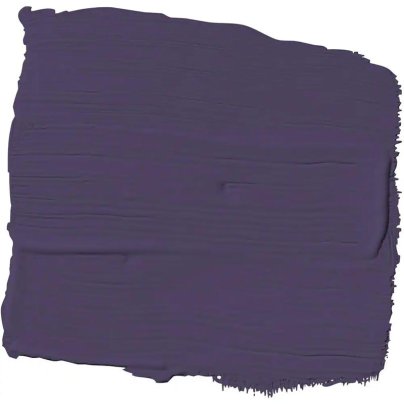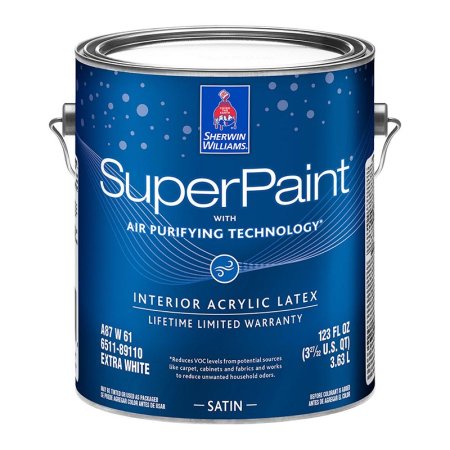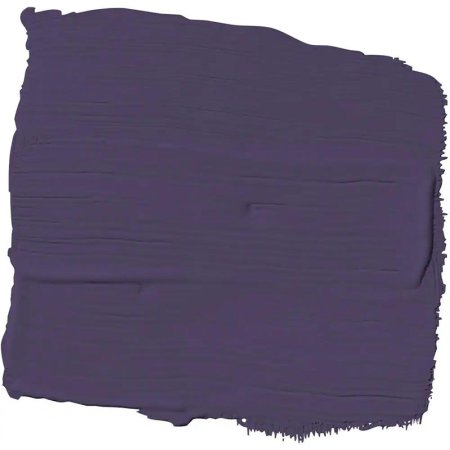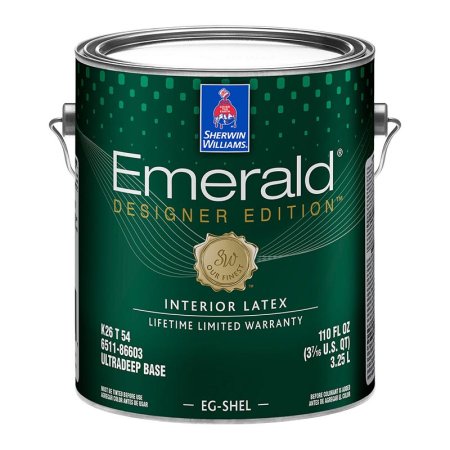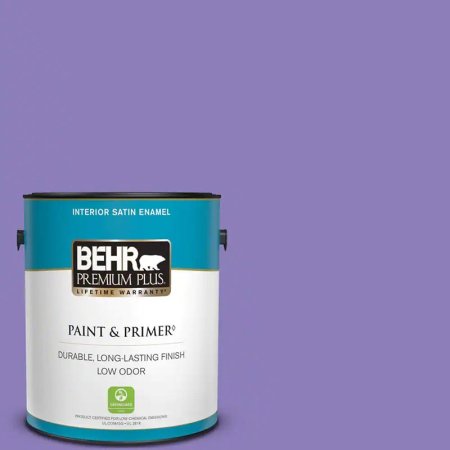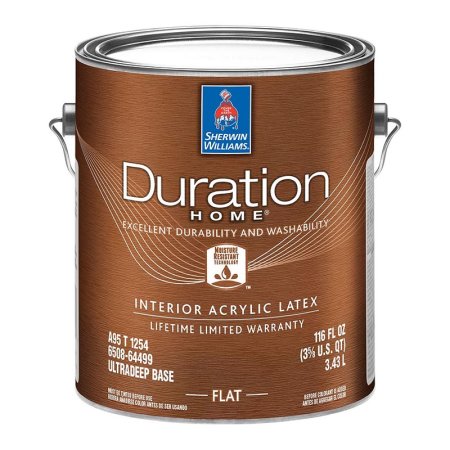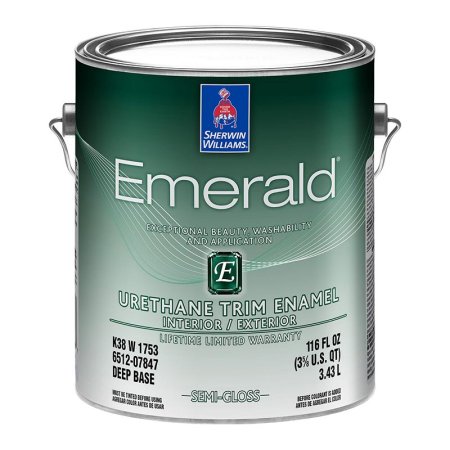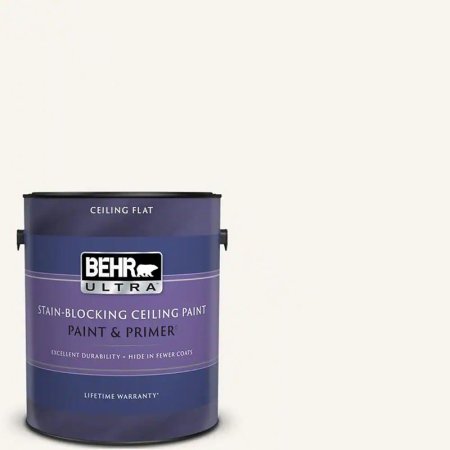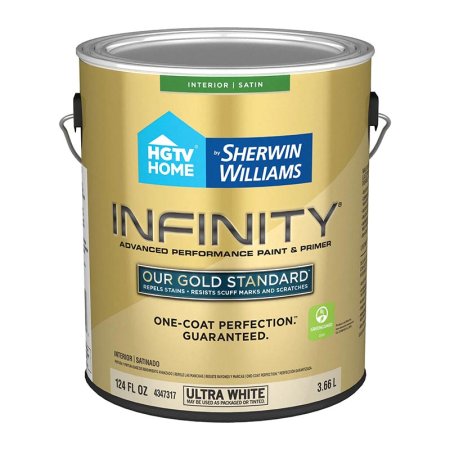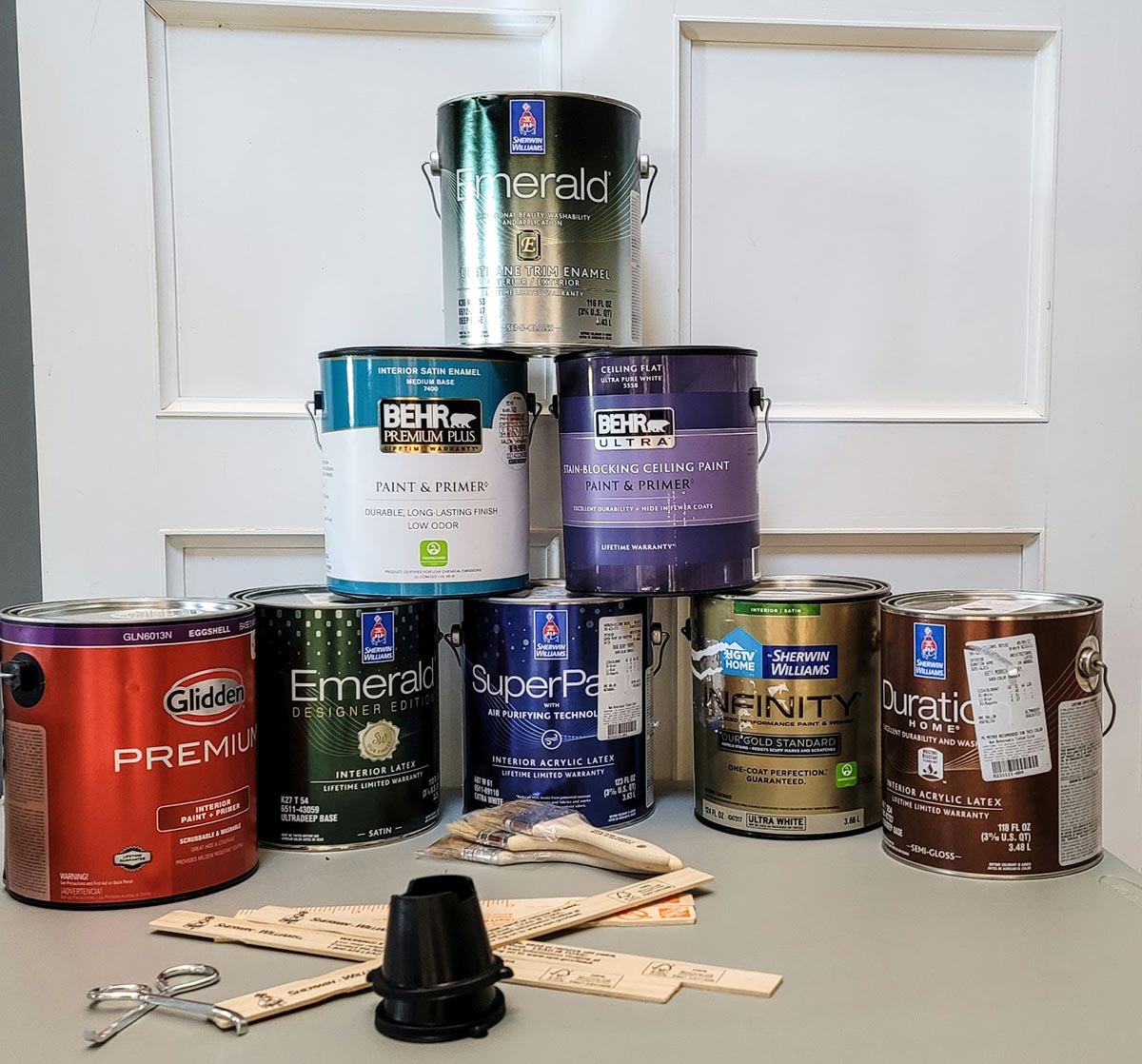
We may earn revenue from the products available on this page and participate in affiliate programs. Learn More ›
Whether painting walls, furnishings, cabinets, or trim, quality interior house paint is the key to good-looking, long-lasting results. But the sheer variety of interior paints to choose from at home improvement centers and hardware stores can be confusing. Purchasing the wrong one could negatively affect your project’s ease, speed, and durability—and even impair indoor air quality.
With so many recent improvements in paint formulations, including an increasing number of eco-friendly options, we were curious about which of the brands and types available today were really the best—so we tested them. We researched and analyzed all the top brands from the top manufacturers, then narrowed it down to eight options. We tested each of the paints by brushing and rolling them on, and we analyzed how well they covered and whether they stood up to typical cleaning.
Ahead, learn more about selecting the right paint for any interior project, and discover why the following products are among the best interior paint options for most users. Don’t miss our test results—we reveal the pros and cons of each pick!
- BEST OVERALL: Sherwin-Williams SuperPaint Interior Acrylic Latex
- BEST BANG FOR THE BUCK: Glidden Premium PPG Eggshell Interior Latex Paint
- UPGRADE PICK: Sherwin-Williams Emerald Designer Interior Latex
- BEST FOR KITCHEN AND BATH: Behr Premium Plus Interior Satin Enamel Paint
- BEST STAIN-BLOCKING: Sherwin-Williams Duration Home Interior Acrylic Latex
- BEST INTERIOR ENAMEL: Sherwin-Williams Emerald Urethane Trim Enamel
- BEST FOR CEILINGS: Behr Ultra Stain-Blocking Ceiling Paint
- BEST ONE-COAT PAINT: HGTV Home Infinity Interior Paint & Primer
How We Tested the Best Interior Paints
We looked at more than three dozen brands and types of interior paints in selecting the ones to test. We considered brand reputation to an extent—it’s tough to beat the quality of Sherwin-Williams’ paint products, but we didn’t automatically eliminate other brands. We also looked at overall customer satisfaction and considered the paint’s versatility, usability, and price. Low-VOC products also piqued our interest, and fortunately, low-VOC paint technology has reached the point where most interior paints emit few fumes.
For the actual testing, we cut drywall into rectangular pieces and used painter’s tape to create a square in the middle. We drew a circle using a thick black permanent marker in the middle of each square. We applied the different paint products on each square via a paint brush. Our intent was two-fold: We wanted to see how many coats it took to conceal the drawn-on circle completely, and we were also looking for the degree of self-leveling—a term that refers to how smoothly and mark-free the paint dries. High-quality paints tend to smooth out well, while lower-quality paints can leave distracting brush marks.
We also used a roller to apply the same paints to a larger sheet of drywall to compare rolled-on coverage and to determine how much paint was needed to impart a uniform color on the drywall (no thin spots). With enamel paint, we also brushed it on a wood baseboard, as this formula is typically designed for hard-working trim and cabinets. We applied the number of coats recommended by the manufacturer, and then we examined the painted swatches to see how well the paint covered the drywall and camouflaged discrepancies.
We awarded points based on a rubric during each test and examination—the better the paint did on a test, the higher the points. After testing, we added each product’s points and averaged them, using the final figures and assessing the paint’s strongest points to categorize the top picks on our list.
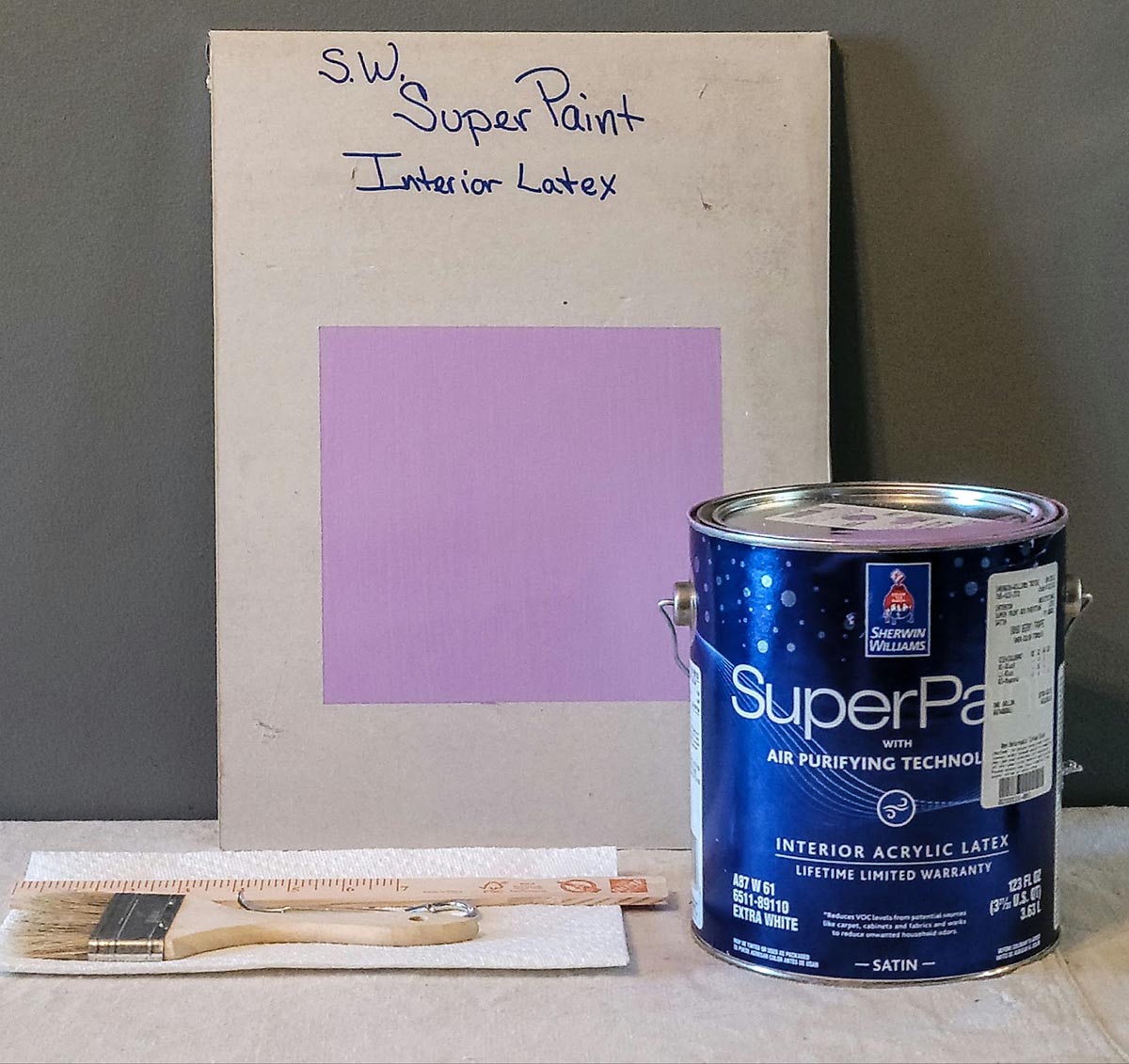
Our Top Picks
Below are the top interior paint performers from our hands-on testing. While they differ slightly in type—some are better suited to ceilings while others proved ideal for walls in children’s rooms—they all excelled in our tests. Whether they’re looking for a high-end paint for an accent wall or a hard-working one that will resist stains, shoppers will likely find it in this lineup of the best indoor paint for most projects.
Best Overall
Sherwin-Williams SuperPaint Interior Acrylic Latex
Product Specs
- Best application area: Walls
- Coverage: 350 to 400 square feet/gallon
- Low VOC: Yes
This Bob Vila Approved product carries our brand’s highest level of recommendation.
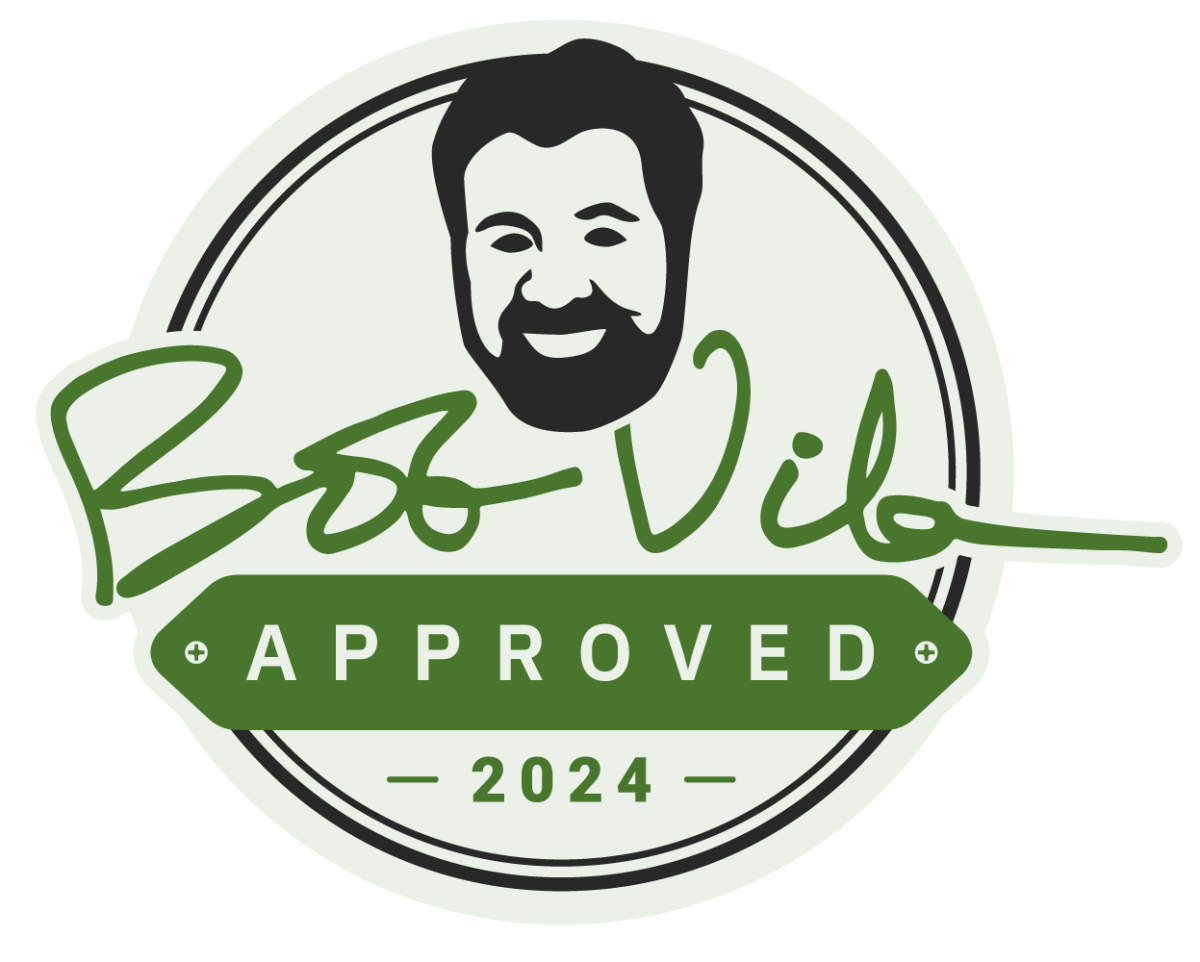
Bob Vila Approved recognizes the household and DIY products that impressed us most in our real-world testing and that exemplify core values of the Bob Vila brand, including craftsmanship, innovation, and value for the dollar. Winners of this designation come recommended by our professional review team and are personally approved by Bob Vila.
What We Like
- Superior coverage
- Highly resistant to wear
- Excellent finish quality
What We Don’t Like
- Expensive
- Available only at Sherwin-Williams stores
The Sherwin-Williams SuperPaint line is one of the best paints for walls, and it’s popular with professional painters because of its superb coverage. With just one coat, this high-quality paint easily covered a circle we drew with a thick black marker on our drywall test board. We tested a color called Berry Frappe in a satin finish, and we were impressed with the high amount of pigment in this acrylic paint. After the recommended 4 hours, we added a second coat, and it dried to form a hard, smooth finish on the test board. This is a relatively thick paint with high viscosity.
SuperPaint is advertised as having “air-purifying” technology. While we can’t confirm that it purified the air, we can say that it had virtually no odor. For anyone sensitive to typical paint fumes, consider trying this low-VOC paint.
We gave the painted swatch 2 weeks to cure completely and then sprayed all-purpose cleaner on the painted area and scrubbed with a white rag. No paint color came off on the rag, so we deemed it to be indeed scrubbable.
Using a roller, we also tested how SuperPaint went on a larger drywall sheet. We found it easy to apply—no runs and no globs—and it smoothed out as it dried, so there were no visual stipples (texture) left behind from the roller.
In terms of downsides, SuperPaint is pretty pricey and it’s only available at Sherwin-Williams stores, although users can order online and then pick the paint up locally.
Get the Sherwin-Williams SuperPaint interior paint at Sherwin-Williams.
Best Bang for the Buck
Glidden Premium PPG Eggshell Interior Latex Paint
Product Specs
- Best application area: Interior walls
- Coverage: Up to 400 square feet per gallon
- Low VOC: Yes
What We Like
- Affordable
- Good coverage
- Goes on smooth and even
What We Don’t Like
- Not impervious to scrubbing
Good-quality paint can be costly, but we found that Glidden Premium interior paint in an eggshell finish provided coverage as good as some of the more expensive brands we tested—at a more reasonable price. Glidden Premium is a combination paint-plus-primer product, so we expected it to cover well, and it did. After applying a single brushed-on coat, we could no longer see the black permanent marker circle we’d drawn on the test board. This may have been partially due to the dark tone of paint we tested, called Royal Indigo, but it was still impressive. We repainted the test board after 2 hours—the time recommended by the manufacturer—although we felt a single coat would have been sufficient. We also rolled the paint on a larger drywall sheet, and it went on smoothly and uniformly.
Now for the minor downside: After waiting 2 weeks for the paint to dry and harden completely, we sprayed on a little all-purpose cleaner, scrubbed the surface with a white rag, and found a slight purple stain on the rag. That indicated some of the paint was rubbing off—not much, but enough to see the color. The paint’s finish still looked good after it dried. We could not tell the difference where we’d scrubbed.
We feel this Glidden product is still an excellent paint, especially because it comes at an affordable price point. It offers great coverage and a smooth finish. Because we removed some of the color with a rag, however, we suggest using this paint in adult bedrooms rather than children’s bedrooms or playrooms where it might not hold up to frequent scrubbing.
Get the Glidden interior paint at The Home Depot.
Upgrade Pick
Sherwin-Williams Emerald Designer Interior Latex
Product Specs
- Best application area: Walls
- Coverage: 350 to 400 square feet per gallon
- Low VOC: Yes
What We Like
- Excellent coverage
- No visible brush marks
- Scrubbable
What We Don’t Like
- Pricey
- Slight paint odor
We really liked the finish we achieved with Sherwin-Williams Emerald interior paint—the color was so rich and bold, and the surface was almost velvety to the touch. We tested this paint in Ripe Berry, in an eggshell finish that Sherwin-Williams oddly calls “Eg-Shel.” It went on uniformly with both a roller and a paint brush. The first brushed-on coat completely covered the permanent marker circle. To be fair, Ripe Berry is a pretty deep shade, so we can’t be sure a lighter shade would have covered the marker quite as well. We applied a second coat as recommended after 4 hours and then let it dry for 2 weeks before spraying with all-purpose cleaner and wiping it with a white rag. No paint color came off on our rag.
This is low-VOC paint, and while we detected a faint odor, it didn’t bother us. One of the nicest things was the way this paint self-leveled to a very smooth surface. Even when we took the test board outdoors in the sunlight to examine it closely, we couldn’t make out any brush marks. Impressive
Emerald is a pricey paint, but we feel it’s among the best low-VOC interior paint options. It imparts a high-end look and feel and is washable to boot. There are more than 200 colors in the Emerald Designer line, so there’s a color for every taste. The way the paint self-smooths may just make a DIY paint job pass for one by a professional painter.
Get the Sherwin-Williams Emerald interior paint at Sherwin-Williams.
Best for Kitchen and Bath
Behr Premium Plus Interior Satin Enamel Paint
Product Specs
- Best application area: Walls, trim, cabinets
- Coverage: 250 to 400 square feet per gallon
- Low VOC: Yes
What We Like
- Affordably priced
- No-mess pouring funnel
What We Don’t Like
- Detectable paint odor
Kitchens, bathrooms, and laundry rooms tend to be high-moisture areas, so it’s always best to paint them with washable, moisture-resistant paint. We found that Behr’s Premium Plus Enamel fit the bill. This is a combo paint-plus-primer, and it covers well—we could only see a faint outline of our permanent marker circle on the test board after the first coat of Premium Plus, which was in a satin finish and a mid-purple tone called Unimaginable. After waiting the recommended 2 hours, we added a second coat, and we couldn’t see a trace of the marker.
This is a relatively thick paint, but it went on smoothly when using a brush on the test board and when rolling on a larger drywall sheet. When the second coat dried, we could barely see the brush marks—it smoothed out so nicely. We did detect an odor when applying Premium Plus, but it is a low-VOC product.
In the scrubbability test, we got a faint hint of the paint color on our white rag—barely enough to be noticeable. Behr also boasts something new: a pourable funnel that fits right on the can lid. Typically, after pouring paint from a can into a roller pan, the paint runs down the side of the can and makes a mess. With Behr’s new funnel lid, we had no drips or mess. We hope other manufacturers follow suit.
Get the Behr Premium Plus interior paint at The Home Depot.
Best Stain-Blocking
Sherwin-Williams Duration Home Interior Acrylic Latex
Product Specs
- Best application area: Walls
- Coverage: 350 to 400 square feet per gallon
- Low VOC: Yes
What We Like
- 1-coat coverage possible
- Washable
- Goes on uniformly
What We Don’t Like
- Pricey
Painting over walls that have stains can be frustrating if the paint dries and the old stains bleed through. Duration Home paint from Sherwin-Williams is designed to block stains, and it’s also formulated to resist new stains and mildew. While we didn’t have a way to test whether it genuinely discourages mildew growth, we can verify that a single coat of Duration Home on our test board completely covered the circle we’d drawn with a permanent marker.
We tested a color called Morning Glory in a semi-gloss finish. This combo paint-and-primer product goes on smoothly and evenly with both brush and roller. The manufacturer doesn’t recommend a second coat, and we felt one coat was sufficient—as long as we applied it liberally (not so much that it ran, but enough to form a reasonably thick layer). We didn’t skimp, so we didn’t have to add a second coat.
We waited 2 weeks before spraying it with an all-purpose cleaner and rubbing it with a white rag. We didn’t find any coloring at all on our rag. This paint dries to a nice, hard finish that would be well suited to children’s bedrooms, playrooms, and family rooms.
Get the Sherwin-Williams Duration Home interior paint at Sherwin-Williams.
Best Interior Enamel
Sherwin-Williams Emerald Urethane Trim Enamel
Product Specs
- Best application area: Walls, trim
- Coverage: 350 to 400 square feet per gallon
- Low VOC: Yes
What We Like
- Excellent coverage
- No visible brush marks
- Scrubbable
What We Don’t Like
- Pricey
- Slight paint odor
Let the kids play! With Sherwin-Williams Emerald enamel on walls, doors, and trim, smudges and smears from little fingers wipe off with ease. We’ve used a lot of Sherwin-Williams paint over the years, but this was our first experience with their Emerald urethane-based enamel, and it won us over.
We tested Emerald in a deep tone called Clematis in a semi-gloss finish. The paint was pretty thick, which usually indicates good coverage, and with just one coat brushed on our test board, Emerald completely covered our permanent marker circle. We brushed on a second coat 4 hours later (the suggested wait time), and we also rolled the enamel on a larger drywall sheet. It rolled on smoothly and covered uniformly. Because this is an enamel often used on wood, we also brushed two coats of paint on a wood baseboard. Emerald created a hard, attractive, and durable finish on all three materials. We detected a mild odor during testing, but at less than 50 grams of VOCs per liter, Emerald enamel qualifies as low VOC.
The paint also excelled in our scrubbability test. After a week, we sprayed the painted test board with an all-purpose cleaner and scrubbed it with a white rag—no color came off on the rag. This is likely due in large part to the inclusion of urethane, which helps create a rigid, impermeable shell. Though a pricey paint, it’s excellent for those who want quality coverage, a uniform finish, and the ability to scrub the walls without removing the paint. We would suggest it for walls and trim in high-usage rooms.
Get the Sherwin-Williams Emerald interior paint at Sherwin-Williams.
Best for Ceilings
Behr Ultra Stain-Blocking Ceiling Paint
Product Specs
- Best application area: Ceilings
- Coverage: 250 to 400 square feet per gallon
- Low VOC: Yes
What We Like
- Hides ceiling imperfections
- Low VOC and odor-free
- Dries smooth
- Blocks stains
What We Don’t Like
- May take 2 or more coats to block stains successfully
Ceilings are more challenging to tape and mud smoothly, so many builders apply a textured surface to ceilings. For the best finished look, flat ceiling paint is also used. We think Behr’s stain-blocking ceiling paint is worth considering.
It was the only paint we tested that came in white rather than a color, but white is traditional on ceilings. A single coat of Ultra ceiling paint didn’t entirely cover the circle we’d drawn on the test board with a permanent marker. We could still see the marker—but just faintly—after the second coat dried. We waited another 2 hours (recommended time between coats) and then applied a third coat. The directions on the can advise a third coat may be necessary. After the third coat dried, we could no longer see evidence of the marker—just a smooth, white surface.
After a 2-week wait, we sprayed the ceiling paint swatch with an all-purpose cleaner and wiped it off with a navy blue rag. We spotted a faint white color on the dark rag, but not enough to concern us. The Ultra ceiling paint dried almost as smoothly as the more expensive paints we tested, and we couldn’t discern any brush marks.
This is low-VOC paint, and we could not detect any odor from it at all. It was also mess-free to use, as it came in one of Behr’s new funnel-type paint cans that allowed us to pour it into the roller pan without the paint running down the side or dripping.
Get the Behr Ultra interior paint at The Home Depot.
Best One-Coat Paint
HGTV Home Infinity Interior Paint & Primer
Product Specs
- Best application area: Walls
- Coverage: 400 square feet per gallon
- Low VOC: Yes
What We Like
- 1-coat coverage
- Combo paint and primer
- Made by Sherwin-Williams
What We Don’t Like
- Slightly visible brush strokes
In our experience, oftentimes paint advertised as “one-coat” will need a second coat for full coverage. We were prepared for HGTV Home’s Infinity paint to need a second coat to cover the circle we drew in permanent marker on our test board. We were wrong. We brushed on a single coat—this paint-and-primer combo is relatively thick—and we could not see any evidence of the marker beneath the paint when it dried.
We were especially impressed because we tested a light-medium tone called Magical in a satin finish that we felt sure would show through. Typically only deep or dark colors cover stains with a single coat. We must mention that this is a Sherwin-Williams interior latex paint explicitly made for HGTV Home, and we can verify it lives up to Sherwin-Williams’ quality standards.
We left the paint swatch for 2 weeks to cure fully before spraying the surface with all-purpose cleaner and wiping it down with a white rag. None of the paint color came off on our rag. We also rolled the paint on a larger drywall sheet, and it went on evenly and covered well. We didn’t detect any odors from this low-VOC paint.
One slight downside, however: Both the rolled and the brushed-on paint left applicator marks—not large ones, but we could still see brush strokes and stipples from the roller. For that reason, users who apply this paint might get the best results by using a roller and following good painting techniques. These include applying the paint with a wool nap roller (costs more but worth it!), keeping a wet edge at all times, and using a very light touch on the wall.
Get the HGTV Home interior paint at Lowe’s.
Jump to Our Top Picks
Our Verdict
The Sherwin-Williams SuperPaint interior paint came in as our top pick because it’s an all-in-one paint and primer that creates a lasting finish and durable surface that holds up to scrubbing. It’s popular among professionals and comes in a range of finishes and colors. However, the best type of paint for interior walls need not break the bank. Our Best Bang for the Buck pick, the Glidden interior paint, took top honors for a paint that offered excellent coverage in an affordably priced product.
Should You Buy a Paint and Primer in One?
Self-priming interior paints, usually labeled “paint and primer,” are worth considering: They have a built-in binding agent that improves adhesion to the surface, and no separate primer coat is required. For those with busy lifestyles, hunting for the best interior paint primer and the best paint for walls takes more time than necessary. When buying the best paint-and-primer-in-one product, it’s a good idea to look at a reputable brand, such as Benjamin Moore or Sherwin-Williams. Since shoppers will only be buying and applying a single product, they will want to make sure it’s a top-quality interior wall paint.
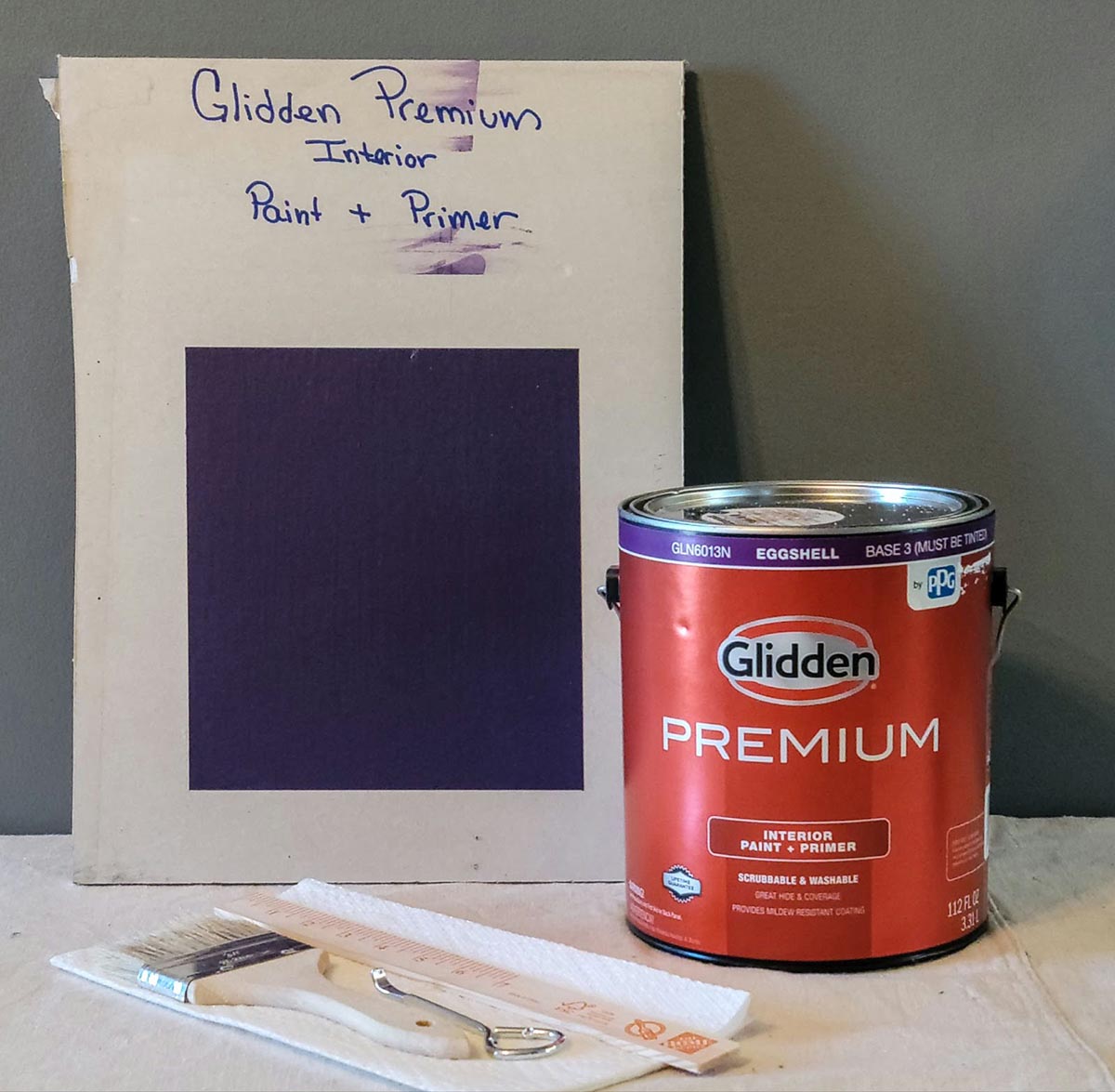
Types of Interior Paint Finishes
All of our recommendations are available in various finishes, including the ever-popular eggshell and satin. These finishes are the most widely used for bedrooms, living rooms, and dining rooms thanks to how they balance the durability of glossier paint finishes with the forgiveness of more matte ones—meaning they aren’t so glossy that they highlight imperfections in the wall. If painting a bathroom or a kitchen, consider bumping up the sheen one level to a semi-gloss for extra resistance to water. When researching interior paint reviews, try to notice whether the user mentions the quality of the finish.
Paints are available in five sheens: gloss, semi-gloss, eggshell, satin (velvet), and matte (flat). Matte or flat paints are the less expensive options, but they are harder to keep clean and are less durable. Flat paints are best for ceilings and low-traffic areas. Gloss is the easiest to clean, lasts the longest, and tends to be more expensive. Gloss paints work best on high-touch surfaces such as doors, trim, and cabinetry. Higher-sheen paints also take longer to cure.
- Flat/Matte: This finish has minimal shine. Matte/flat finishes provide excellent coverage and cover imperfections well. However, they are the least durable of all the finishes and best for surfaces that will not be touched much, like ceilings or formal dining rooms. Some manufacturers sell washable flat-paint options, but lower-quality flat paints may rub off with a damp rag.
- Eggshell: Eggshell is slightly more lustrous than flat paints. This finish covers imperfections, and it’s more durable than flat finishes. Eggshell paints are great for low-to-medium traffic areas like living rooms, hallways, and entryways.
- Satin: Satin is the most popular finish in interior paint finishes. This finish has a velvety sheen and is easier to clean than flat and eggshell paint finishes. Satin finish is a great choice for high-traffic areas like kitchens, playrooms, family rooms, bathrooms, and laundry rooms.
- Semi-gloss: Semi-gloss finishes are shiny and reflective. This finish is extremely durable and mildew-resistant, so these paints are best used in kitchens and bathrooms. Semi- and high-gloss finishes are among the most scuff-resistant paint options
- High-gloss: High-gloss paints have the shiniest and most reflective paint finish, and they are the most durable and washable. This finish is best for wood such as doors, trim, and cabinetry. However, users can also successfully apply high-gloss paint on walls in projects where they’re trying to make drywall look like wood, such as wainscoting (trim on the lower half of a wall) that’s made to mimic the look of wood trim.
What to Consider When Choosing the Best Interior Paint
A new coat of paint is a simple and affordable way to update the interior of a home. Although the color is crucial to achieving the desired overall effect, choosing the best paint for interior walls is just as essential to ensure pleasing results. Weigh these factors in any paint product to avoid common pitfalls.
Viscosity
Viscosity refers to a paint’s thickness and structure, also known as the paint’s body, which will generally be either dense or flowing. Paint with higher viscosity is a thicker, slower-moving paint. High-viscosity paints splatter and drip less but take longer to dry. Low-viscosity paints are thinner and tend to drip and splatter more, but they dry quickly.
A paint’s viscosity also informs which application method can be used with success. Ceiling paint has a higher viscosity than most wall paints and poses a lower risk of drips and splatters when applying overhead. Some types of interior wall paint have a lower viscosity, so they tend to drip off the brush or roller more readily. Their quicker dry times mean less waiting to put on a second coat.
Durability
Oil-based paints are more durable than water-based (a.k.a. latex or acrylic) paints. Oil-based paints are best for high-traffic areas or exteriors. Manufacturers offer only a few oil-based paints for interior use these days because they typically emit unpleasant, potentially unhealthy fumes. Fortunately, latex paints have become more durable and of higher quality.
A paint’s durability also goes hand in hand with sheen level, whether it’s oil- or water-based. The higher the sheen (such as semi-gloss or satin), the easier it is to clean and the longer it will last. However, higher-sheen paints can typically highlight any imperfections on the surface.
Suitability for the Surface
Interior paints come in a few varieties: acrylic or latex (water-based), alkyd (oil-based), and newer water-based alkyd varieties that perform like oil paints but emit less harmful fumes. Shoppers will want to choose the type that holds up best on the surface they plan to paint.
Opt for the more consistent finish and fade resistance of latex or acrylic paint for walls, seldom-used furnishings, and cabinetry in dry areas. Consider the more impact- and rot-resistant oil-based or water-based alkyd paint for trim work, kitchen and bathroom cabinets, and everyday furnishings.
VOCs
Volatile organic compounds (VOCs) are chemicals found in many oil- and water-based paint products that easily evaporate and can emit toxins into the surrounding air. VOC exposure can induce headaches, nausea, or liver and kidney damage, so the lower the VOC content, the more eco-friendly the paint. Seek out paints labeled “zero-VOC” or “low-VOC” to minimize exposure to harmful fumes. When painting outdoors, fumes are not as big a deal, but when applying paint for interior walls, most users prefer one that doesn’t smell too strongly or give them a headache.
Dry Time
Because VOCs can be emitted into the air from the time of paint application up to a few months after the paint cures, choosing a paint that dries and cures quickly can help minimize VOC exposure. Look for water-based paints that dry to the touch in 1 hour and cure within 30 days. Oil-based paints should optimally dry to the touch in a few hours, can be recoated by 4 hours, and fully cure within 7 to 14 days. Most paints require the full 14 days to be cured sufficiently for washing or scrubbing.
FAQs
Before making a final selection, the following answers to frequently asked questions may provide additional insight into the optimal procedures for selecting the best type of interior paint for walls.
Benjamin Moore and Sherwin-Williams are two of the best-selling brands on the market among professional painters.
The best colors for bedrooms are nonvisually stimulating hues such as blues and greens or cool grays and neutral creams. However, the best paint to cover dark walls is often another deep or dark tone.
Light paint colors make a room look bigger and brighter.
This rule states that 60 percent of the room should be a dominant color, while 30 percent should be the secondary color or texture, and 10 percent should be an accent color. The room’s main color—the walls—should be 60 percent. Use the 30 percent or secondary color in the draperies, accent chairs, bed linens, or on an accent wall. The remaining 10 percent should be in the accent decor, such as wall trim and throw pillows.
Painting your ceiling and walls the same color will draw the eye up, creating the illusion of a larger room and higher ceilings. However, using a dark color can have the reverse effect and make a room look smaller and closed-in, especially if there isn’t enough natural light.

